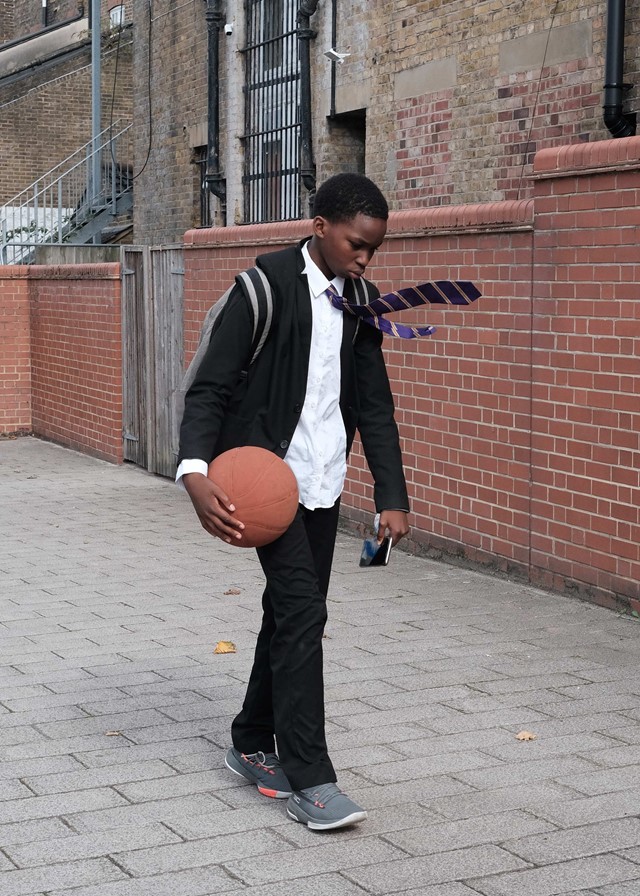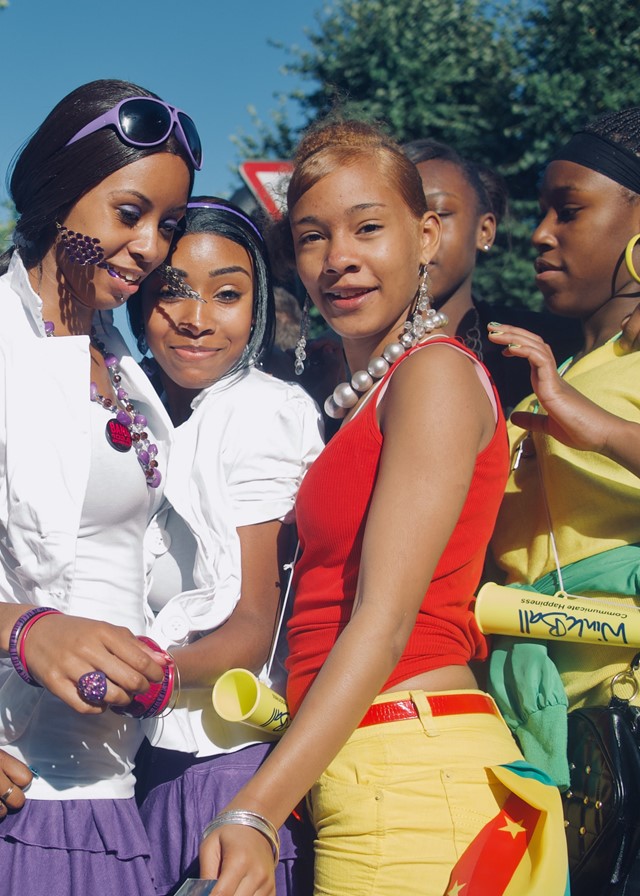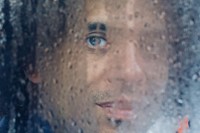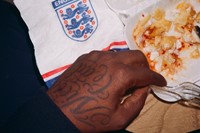As his new exhibition opens at The Photographers’ Gallery in London, the photographer talks about “claiming these offbeat places as an integral part of Britain”
Just prior to Home is Not a Place opening at The Photographers’ Gallery in central London, a trio of posters for the Johny Pitts show arrived in Peckham. Stretched across a billboard and interspersed with the distinctive blue shade and soft font that fronts the accompanying book, the images occupy a side road just off Peckham Hill Street, effectively opposite Franklyn Rodgers’ Peckham Portraits which cover Mountview drama school. Each a remoulding of narratives surrounding Black British culture today, the two projects could almost be considered in dialogue with one another.
“I’ve written a B-side manifesto where every time I do something it has to have these ten points involved,” the photographer, writer and broadcaster tells AnOther. “I’m under no illusions certain people won’t come to the gallery, so it’s important some of that work can be seen outside of the gallery space.” The policy extends to leaving his images unlabeled, meaning if you’re not privy to the specifics of south London you might not recognise Rye Lane graffiti, and if you didn’t grow up in Pitts’ native Firth Park in Sheffield, you probably can’t place the high street scene he depicts in monochrome. “I’m constantly trying to do these little signals out to people,” he continues, “this idea of: if you know, you know.”
Geography and how it interacts with race and class is tied up with Pitts’ practice, from the British road trip he undertook with poet Roger Robinson for Home is Not a Place – exploring the coastal, rural, urban and suburban for an answer to ‘what is Black Britain?’ – to the alternative map of the continent at the heart of 2019’s Afropean: Notes from Black Europe. Interested in how “fascinating, huge histories can be hidden behind really banal situations”, central to Pitts’ image-making is finding the magic and beauty, especially as it relates to the Black experience; ideas about home are a further component of this. “It was always obvious Sheffield was my home, then Brexit happened and there were weird dividing lines that had never been there before; lots of right-wing elements crept into my community, crisscrossing with race,” notes Pitts. “I realised Sheffield was never really my home, it was Firth Park, and that was only because of the community bonds.”

Now in its third iteration following stints in Sheffield and Edinburgh, the show, named after a James Baldwin quote taken from Giovanni’s Room, is wholly personal: in addition to framed prints, a large table hosts family albums while unique to London is a deeper dive into Pitts’ Japanese work (he lived there in the late 80s, returning as an adult in 2013, and his next project will explore this). Through a beaded curtain, a third room mirrors a living space, with a leather sofa and vintage TV. “It’s trying to soften the gallery space, making it a place my community recognises,” says Pitts, referencing the significance of object-oriented ontology, or the idea of treating objects as though their experiences are as valid as human experiences.
On nearby shelves, his own VHS collection incorporates films like Do The Right Thing and the self-taped ‘Black Performers in the 1940s, Harlem’, while a row of books makes neighbours of Gordon Parks, Liz Johnson Artur and James Barnor. A stack of cassette tapes alludes to the recordings his sister made from a Black-owned pirate radio station in the 90s that plays overhead. “Looking at CD inlays was my way into photography, and I think for a lot of Black photographers’ music’s important. Like Roy DeCarava who came out of the jazz scene – in his photographs there is jazz, and in mine there’s hip-hop, some jungle,” shares Pitts. “What’s interesting is not just what’s being played, but the texture. With my images, I never want them to be too shiny – that’s my way of being at a pirate radio station.”

He returns to DeCarava when discussing the book, which was published by HarperCollins last autumn and marries his images with Robinson’s poems. “It’s a hybrid, people don’t know how to place it – not necessarily a bad thing – but there are others, like DeCarava and Langston Hughes’ The Sweet Flypaper of Life, John Berger and Jean Mohr’s A Seventh Man. So we’re building upon their work.” Shortlisted for a book award, the pair subsequently found themselves in the strange but “quite amazing” situation of an award ceremony amongst primetime celebrities. “It made me think of a quote by Toni Morrison: ‘I stood at the border … claimed it as central’, and that’s what we’re doing with this work – looking at these offbeat places, but actually claiming them as an integral part of Britain.”
Home Is Not A Place by Johny Pitts is on show at The Photographers’ Gallery in London until 24 September 2023.






